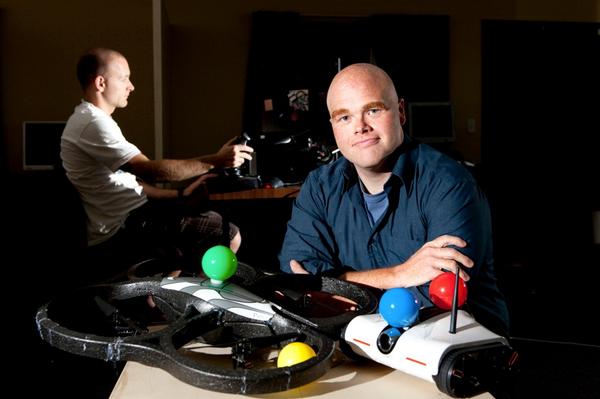UC psychologists helping shape the robotic future
Tuesday 7 May 2013, 12:05PM
652 views

Remotely-operated vehicles are emerging globally as a big business and University of Canterbury (UC) psychology researchers are looking for ways to make them more user-friendly.
Professor Deak Helton says while the vehicles provide benefits, they pose difficulties because the environmental information available to the pilot is limited.
``The operator relies on camera feeds and perhaps other sensors on the vehicle. The amount of environmental information when the person is tele-present is much more limited than when a person is present.
``In psychology here at UC we are conducting cutting edge research to figure out how to improve robotic operations. We are focusing on the use of robots in emergency and post-disaster response.
``Unlike the really expensive drones you see used by defence forces, most civil systems are basically a mobile camera. The challenge is getting the camera into the place you want to see without getting stuck.
``Imagine a remote controlled vehicle being sent through the sub-floor of an earthquake damaged building. Putting a person in there is difficult and it is potentially lethal if the building collapses,’’ Professor Helton says.
His group has been investigating how people navigate robots in restricted environments. One of their papers, Cornering law: The difficulty of negotiating corners with an unmanned ground vehicle will soon appear in the peer reviewed journal Human Factors.
UC students James Head and Benno Blaschke tested a model Professor Helton developed with colleagues in the United States.
``People often think psychology does not have laws analogous to the physical sciences. This is a misconception. For example, the reason you use a mouse as your primary tool to navigate desktop interfaces is because researchers at Xerox used a law discovered by the psychologist Paul Fitts.
``According to Fitts’ Law the mouse was the best of the possible tools at the time. The Cornering Law I developed with colleagues is an analogous model of how people navigate around corners. This law enables researchers to test navigation tools and even gauge the skill level of different pilots.
``The Cornering Law is an application of information theory to robot navigation. The difficulty of cornering is a function of the relative size of the robot to the size of the corner. But the functional relationship is contingent on both its human operator’s skill and the tools involved.
``We do a lot of research on robots, both ground and aerial robots. Our point of difference with other labs internationally is we are focused primarily on off the shelf civil systems. We are interested in taking existing commercial systems and helping folks actually use them. Billion dollar systems are great for big governments, but for the person who wants to know if their foundation is safe or not, they aren’t going to use a billion dollar gee-whiz robot. They need a camera, some wheels, and psychology,” Professor Helton says.